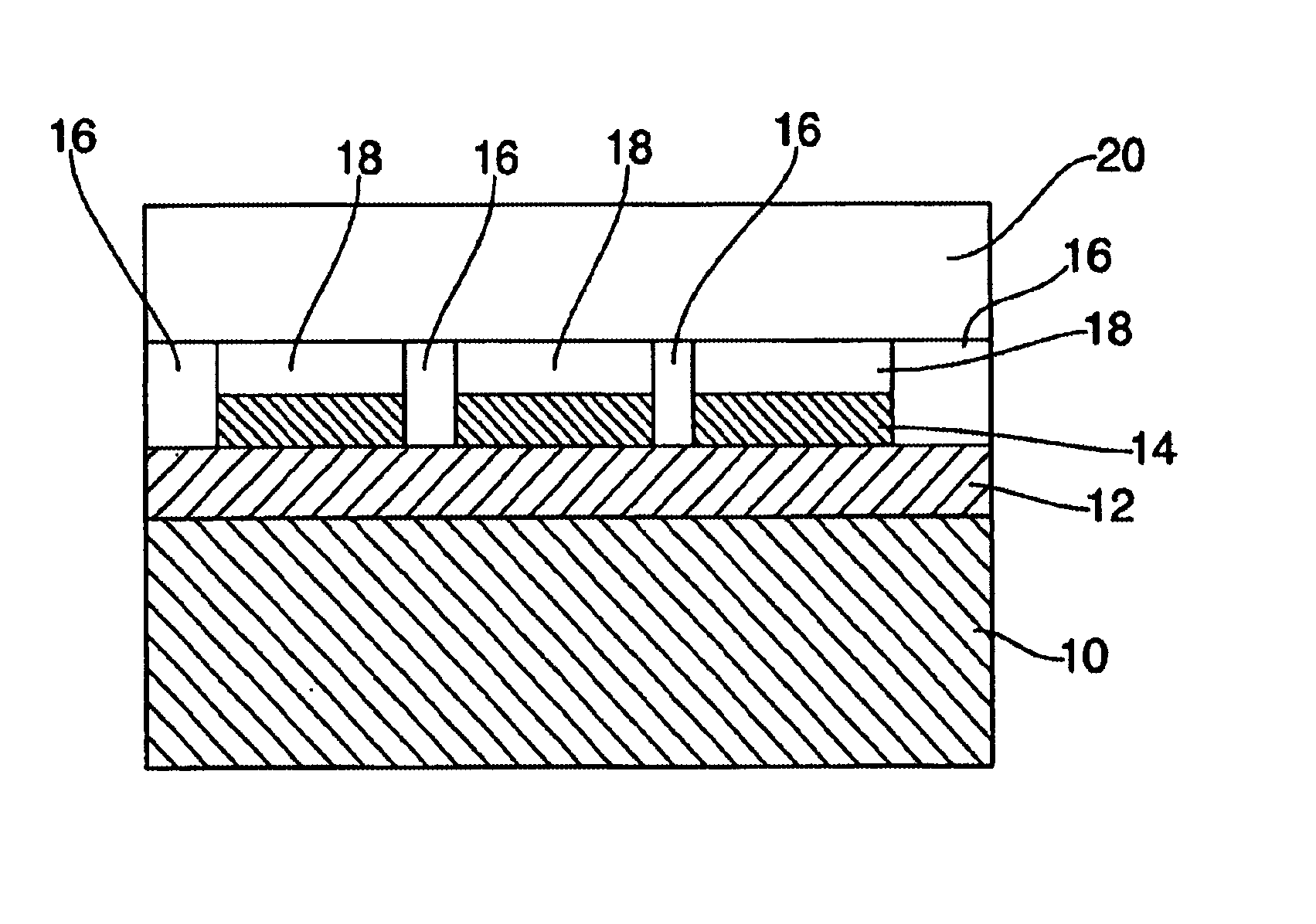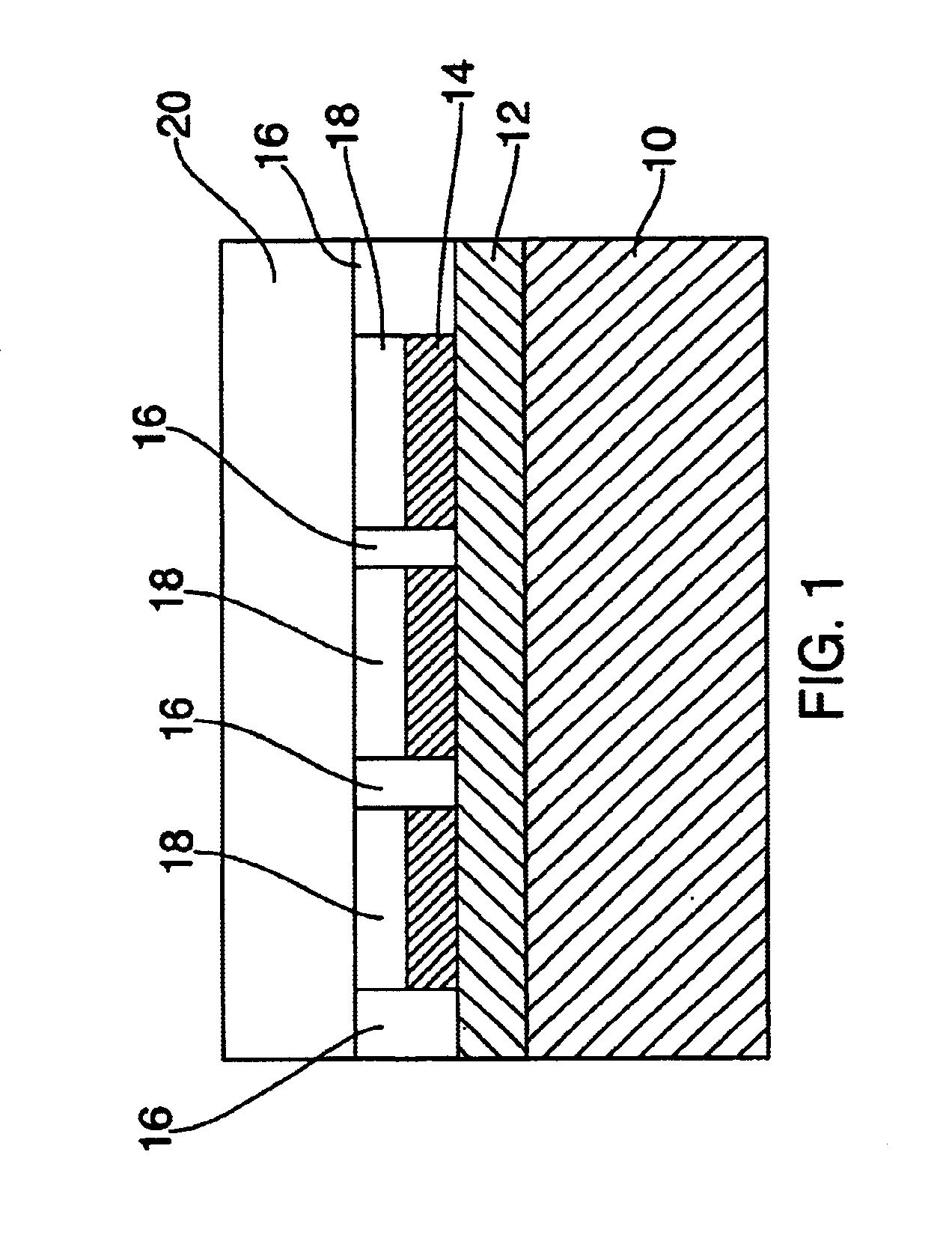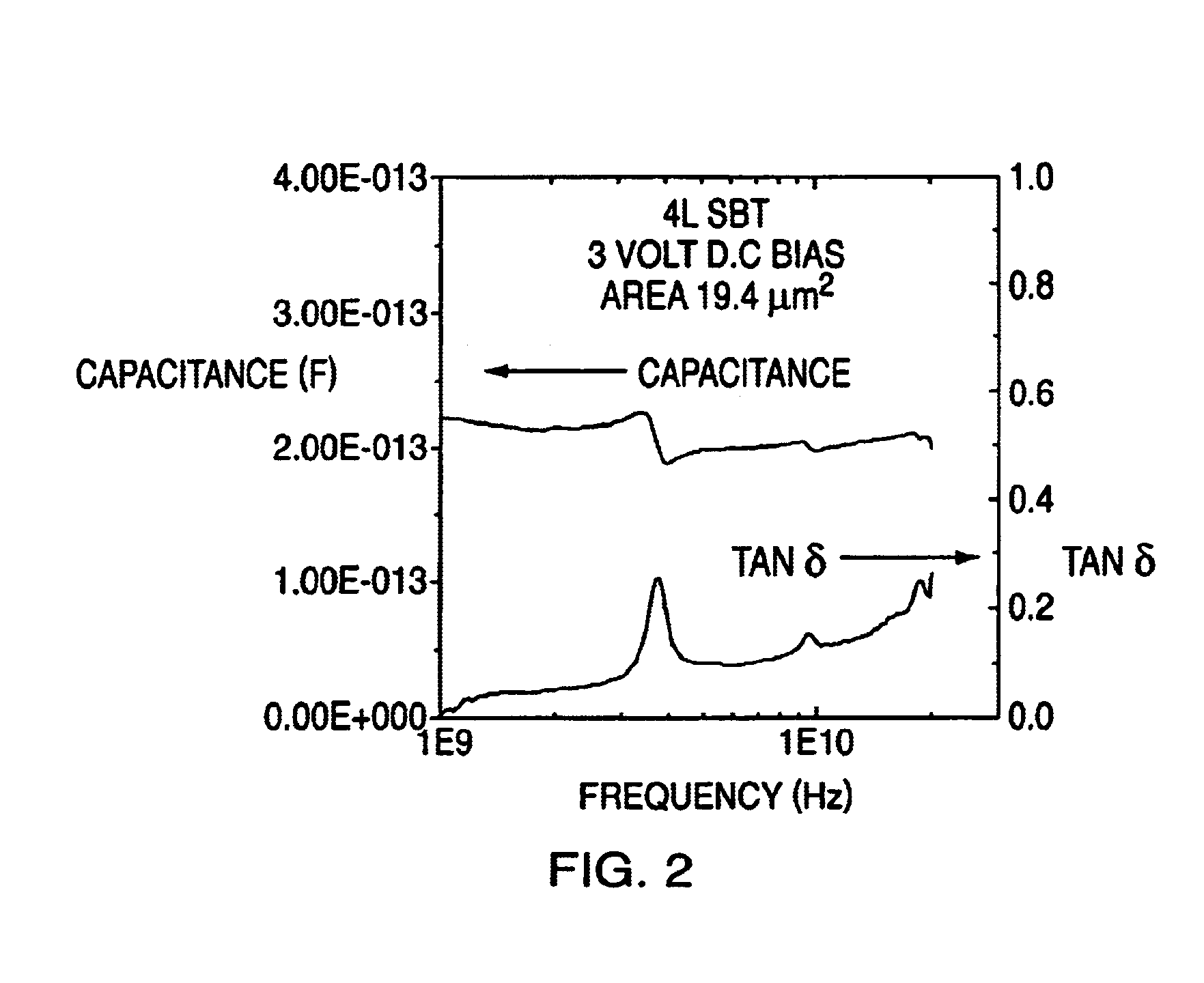Tuneable ferroelectric decoupling capacitor
a ferroelectric decoupling capacitor and ferroelectric technology, applied in the direction of capacitors, semiconductor devices, electrical equipment, etc., can solve the problems of destroying the efficacy of bypass capacitors, becoming nearly impossible to escape harmonics or subharmonics, etc., to achieve maximum damping and maximum losses
- Summary
- Abstract
- Description
- Claims
- Application Information
AI Technical Summary
Benefits of technology
Problems solved by technology
Method used
Image
Examples
example 1
[0017]This example illustrates a 4 micrometer by 4 micrometer ferroelectric capacitor prepared on an oxidized silicon wafer. An oxide layer 400 nm thick was deposited on a silicon wafer. A blanket layer 250 nm thick of platinum was sputtered on the wafer and patterned by standard photolithiographic techniques to form a bottom electrode for the capacitor and a contact pad for electrical testing. A thin film consisting of Strontium Bismuth Tantalate (SBT) / Bismuth Titanate (BT) ferroelectric layers was spun onto the wafer by chemical solution deposition technique. The film consisted of three layers SBT and one layer of BT and has a total thickness of 120 nm. A blanket film 100 nm thick of Pt was deposited on top of the film and patterned to form the top capacitor electrode and electrical contact.
[0018]Measurements made using a Radiant Technologies ferroelectric test system confirmed that the film was ferroelectric. High frequency electrical testing was conducted using a Hewlett Packard...
example 2
[0022]This example illustrates a capacitor prepared from a substrate on which a blanket conducting electrode is deposited made of a noble metal such as platinum, a ferroelectric layer is deposited on the electrode by a process such as chemical vapor deposition (CVD), physical vapor deposition (PVD), or chemical solution deposition (CSD). Ferroelectric materials with large piezoelectric coefficients such as lead zirconium titanate (PZT) are preferred. A second conducting electrode is deposited on the ferroelectric to form a capacitor stack. The stack is patterned into an array of capacitors by standard lithographic techniques. The lateral dimensions of the capacitors are chosen so that individual capacitors have resonances at the desired frequency / frequencies. The thickness of the ferroelectric and the number of the capacitors are chosen so as to provide the required capacitance per chip (1 nF typical). For PZT, which has a dielectric constant of about 1000 at a film thickness of 200...
PUM
 Login to View More
Login to View More Abstract
Description
Claims
Application Information
 Login to View More
Login to View More - R&D
- Intellectual Property
- Life Sciences
- Materials
- Tech Scout
- Unparalleled Data Quality
- Higher Quality Content
- 60% Fewer Hallucinations
Browse by: Latest US Patents, China's latest patents, Technical Efficacy Thesaurus, Application Domain, Technology Topic, Popular Technical Reports.
© 2025 PatSnap. All rights reserved.Legal|Privacy policy|Modern Slavery Act Transparency Statement|Sitemap|About US| Contact US: help@patsnap.com



